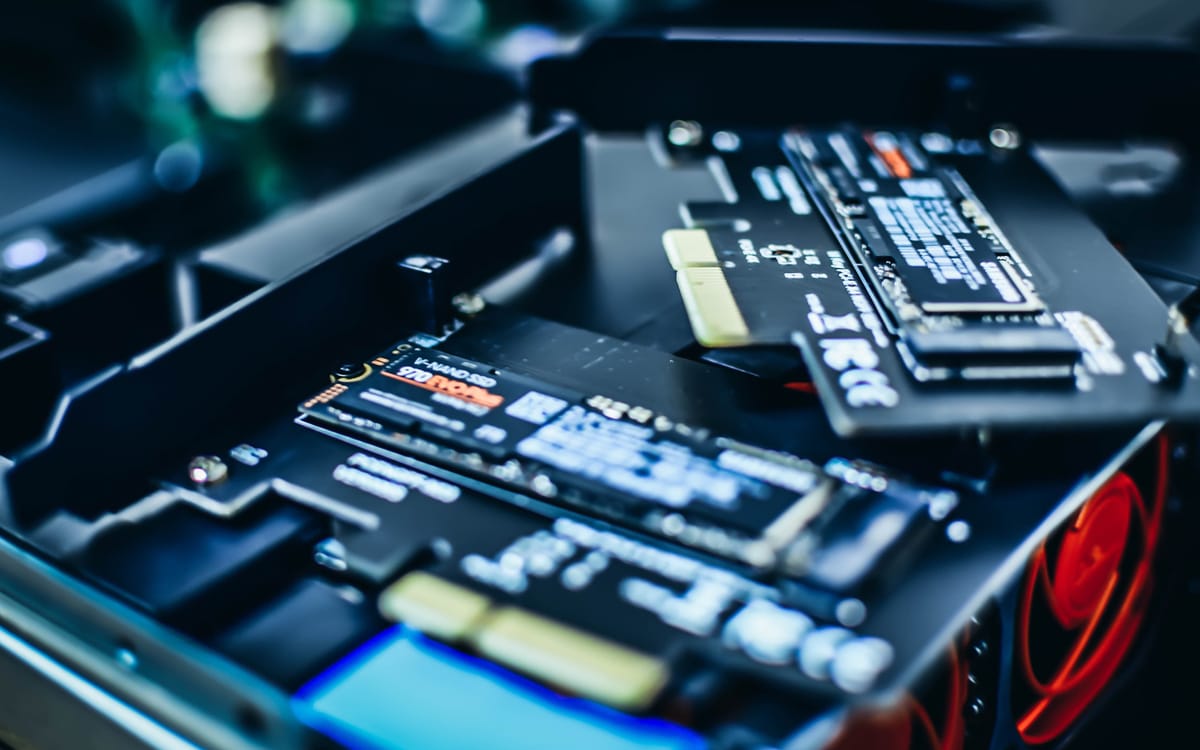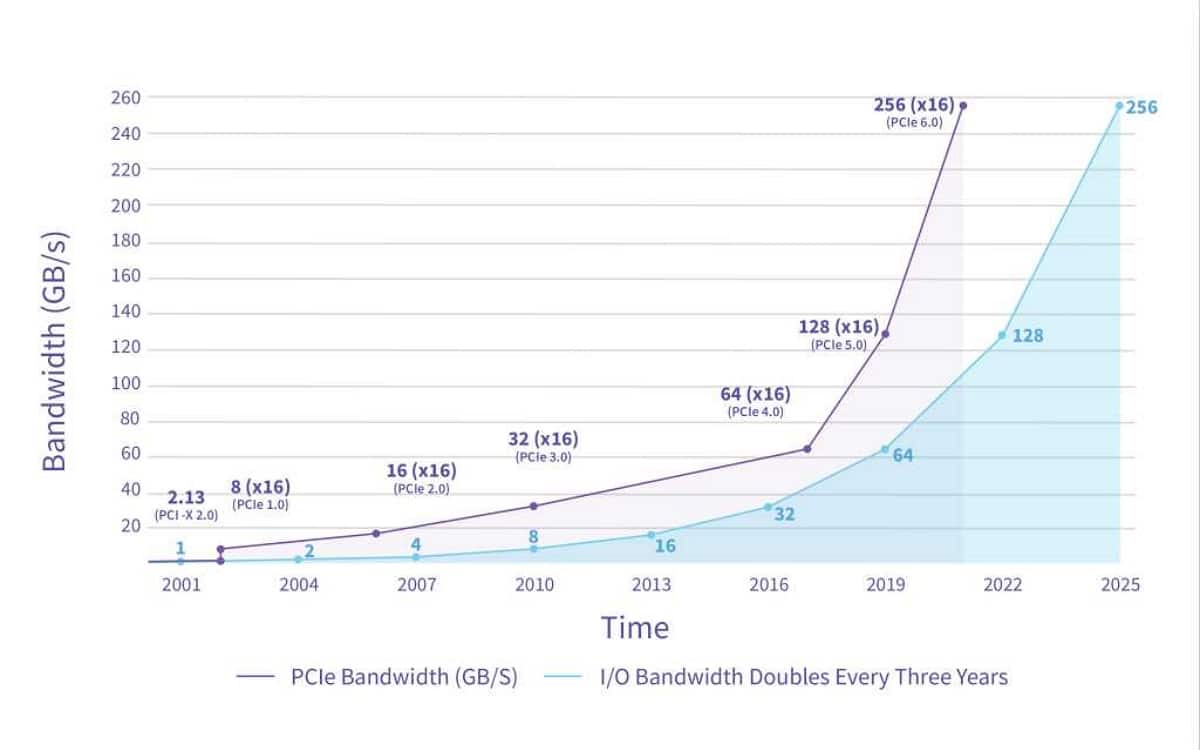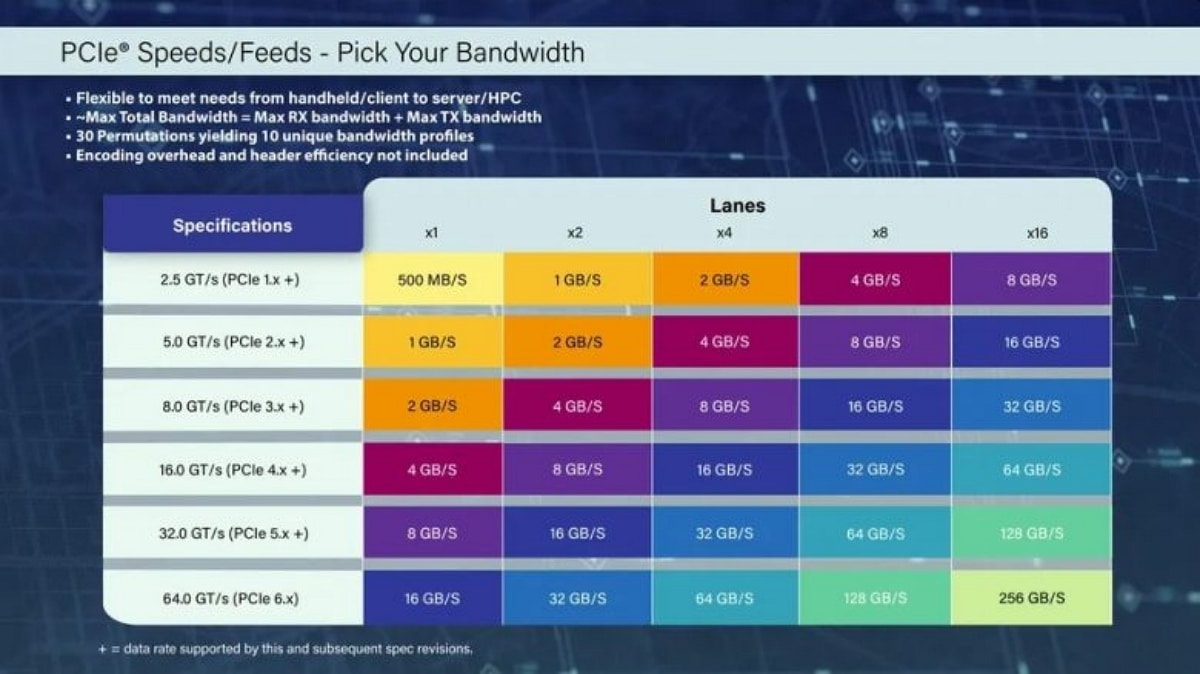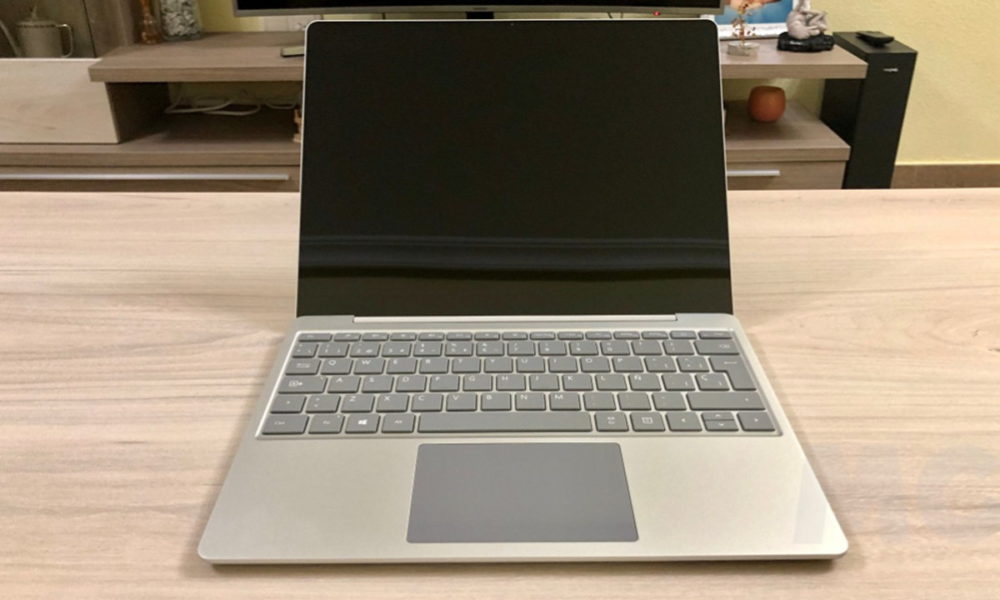
While PCI Express 5.0 has only just arrived, the next PCI Express 6.0 standard is already making a name for itself. PCIe 6.0 specifications have just been finalized, and it already promises to make your SSDs twice as fast.
The current PCI Express 5.0 standard, supported by newer Intel Alder Lake processors and the AMD Ryzen 6000 Mobile that were introduced earlier this month, has doubled SSD read speeds to 14 Gb / s, down from just 7 Gb / s with PCI Express 4.0. The next standard again promises to be twice as fast, allowing SSDs to deliver up to 28 Gb / s.
PCI Express 5.0 is currently only used by a handful of users, but the PCI Special Interest Group, the organization which manages the new PCI Express standards, has just published the final characteristics of the next version 6.0 as well as the bases of the next generation of SSDs and graphics cards. The new standard is a significant achievement for the PCI Special Interest Group, which has achieved its goal of doubling PCI Express speeds every three years since the specification was launched in 2003.
To read also – PCI Express 5.0: this is how the new 600W connector will boost the power of graphics cards
What technical specifications for PCI Express 5.0 SSDs and graphics cards?
PCIe 6.0 is a significant change from PCIe 5.0 due to its higher transfer rate which offers a total bandwidth of 256 GB / s on 16 channels in both directions for ” maximum two-way bandwidth of up to 256 GB / s ”, According to the PCI-SIG.
However, some systems may only support 8 lanes, 4 lanes, 2 lanes, or 1 lane. Speeds are halved every time you divide the number of lanes by two, as you can see from the graph below.
To reach these blazing speeds, PCIe 6.0 will use 4-level pulse amplitude modulation, or PAM4, as well as up-to-date packet management and flow control. PAM4 technology is not new in itself, but until now it has been mainly used by ultra-high-end network equipment that offers features such as 200G Ethernet.
PAM4 technology is also used by Micron and Nvidia for GDDR6X memory that we will find in the next RTX 3090 Ti which will be released in a few days. She allows him to run much faster than regular GDDR6 high-end RTX series 30 graphics cards. This is because digital signals are sent with greater integrity and with more bits transmitted per period, which allows increased bandwidth to the connected peripheral.
Of course, like all versions of PCIe, it will be backwards compatible with previous versionswhich means that you will be able to use a PCIe 5.0 component on a PCIe 6.0 motherboard and vice versa. However, you will need two PCIe 6.0 components if you want to take advantage of the full performance offered by the standard.
When will the first PCI Express 6.0 components be available?
The new PCI Express 6.0 standard will arrive for SSDs, network and graphics cards, and servers in 2023. However, due to increased demand, server operators will be the first to purchase PCIe 6.0 hardware. Therefore, this technology will likely eventually find its way to consumer products later in 2024 or 2025. As a reminder, the PCIe 5.0 specifications were released in 2019, and the first products didn’t start to hit the market until last year.
For now, 256 GB / s transfers are far beyond the needs of most personal computer users today. However, since the PCIe 6.0 standard will first be used in servers, and could ultimately revolutionize our use of PCs.
Not all consumer graphics cards and SSDs have yet taken advantage of the high bandwidth available with PCIe 4.0, let alone with PCIe 5.0. We imagine that the Nvidia GeForce RTX 40XX Ada Lovelace graphics cards that will arrive by this summer will not use all the power offered by the PCI Express 5.0 lanes either, so we will not find compatibility with the PCI Express 6.0 lanes before. at least the RTX 5000 generation, or even 6000.
Source: TechRadar





